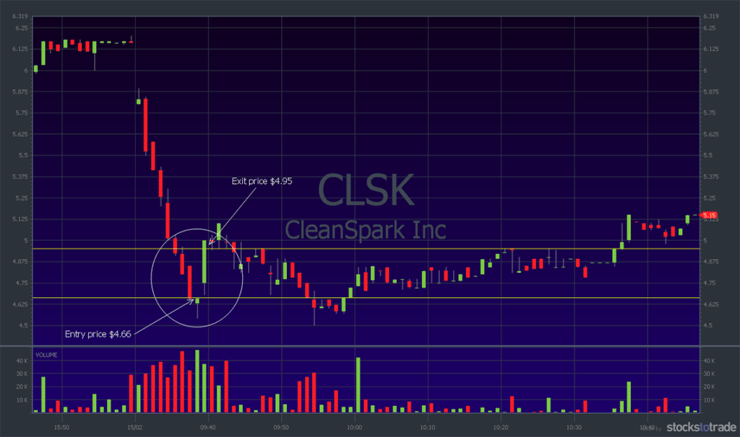I can’t help but be ambitious in every aspect of my life. Whether it’s trading, teaching, or traveling. And now … charity. Ambition and drive. If you have them and want to change not only your life, but the world, apply for the Trading Challenge. Financial freedom is empowering.
Table of Contents
Let’s Save the Reef — and Our Oxygen Supply
Last week I was in Singapore for some meetings. Now I’m in Australia working on helping save the Great Barrier Reef.
Check this out — it’s HUGE …
The Great Barrier Reef accounts for roughly 10% of the world’s coral reefs. It’s also the largest living structure in the world. In case anyone doesn’t know why I’m doing this — after all, I can barely put my head underwater — I’m trying to save the reefs because scientists believe that 50% of the world’s oxygen comes from the oceans. And …
… they believe coral reefs give off more oxygen than carbon dioxide during the process of respiration. Which means …
Coral reefs are GOOD. We need to save them.
So, the reefs are gonna die, roughly 90%, by the year 2050 at the current rates. 70% by the year 2030. Which is crazy. We have just over a decade before it really gets bad and three decades before it’s gonna be tough to breathe. So this is not a small problem.
I hope now you understand the reason for my ambition. We’re trying to help. The post above is from SaveTheReef on Instagram. It’s part of a new Karmagawa project. Follow both and share everything so we can stop the madness. I encourage you to follow right now — SaveTheReef (@savethereef) and Kamagawa (@karmagawa).
Trading Transparency
This is usually the part of my weekly update where I tell you about my trade of the week. Yes, I’ve been trading and teaching, even while traveling. Which is cool, but …
… this week there weren’t any really big wins.
There haven’t been that many perfect plays since the SHMP play from my last update. But I’m still trying. I’m still making a few hundred here or there.** And I have a few losses — very small losses. The key is you’ve gotta wait for the best play.
So, instead of only telling you about my best trade (which I will), I’m gonna lay down a little reality check. I’d love to share a huge win with you. But it’s more important to share everything. The wins … the losses … everything.
Here’s a list of my trades last week. (I write these updates the weekend before I post them because my schedule is so crazy.) Ok, here they are, both wins and losses:
- February 15: +$1450** CleanSpark Inc (OTCQB: CLSK) Long
- February 15: +$217** Nightfood Holdings Inc (OTCQB: NGTF) Long
- February 19: +$440** Khiron Life Sciences Corp (OTCQB: KHRNF) Long
- February 20: -$70** Kandi Technologies Group Inc (NASDAQ: KNDI) Long
- February 21: -$12** FuelCell Energy Inc (NASDAQ: FCEL) Long
- February 22: +$520** Zosana Pharma Corporation (NASDAQ: ZASN) Long
You can learn more about every trade I make over on Profit.ly — the social trading platform where I post every trade. To get alerts and more detail, get a subscription.
The Truth About Small Wins, Cutting Losses, and Lessons Learned
I didn’t share all my trades to show off or try to prop myself up. I don’t need to do that. The reason I’ve shared them is to emphasize some ideas I hope you’ll use to your advantage.
Small Wins Add Up Over Time
There’s not one big winner on that list. The CLSK trade wasn’t bad, but in the larger scheme of things, it’s still a small win. Granted, I’m trading with a small account because I trade to teach. Yes, I could trade with a big account and make a lot more. The point is, small wins add up over time.
So long as you …
Cut Your Losses Quickly
Both losses in that list were small. Both trades I played conservatively. It’s always better to cut losses quickly than stick with an open position and get your ass handed to you. Avoiding potential disaster is the most important thing you can do as a trader. Of all my trades last week, I might just be most proud of the losses because they‘re small.
Losing Trades Are Part of the Process
One more observation about those two losses: Losing trades happen. If you think you’re going to jump into trading and not lose, you got another thing coming. Seriously. I win (at the time of writing) 74.95% of my trades.** Which means I lose 1 out of every 4.
My results are NOT typical. That doesn’t mean you can’t be as good (or better) a trader as me. It’s possible — if you work hard enough, study, practice, and learn to cut losses quickly. Becoming a successful penny stock day trader takes time, effort, and good risk management.
Note: I am NOT a financial professional. Most traders lose money. Do your due diligence. (Lawyerly love. They protect me from me. And — most importantly — they protect you from being misled. It’s unfortunate that so many so-called gurus aren’t more transparent.)
Back to the losses. Small losses are good because they lead to …
The Lesson In Every Trade
Win or lose, there’s a lesson to be learned from every trade. Keep a solid trading journal. If you keep track of every detail of your trades (even paper trades) you’ll gain powerful insight. You’ll learn about your own psychology. You’ll get a clearer idea of the mechanics of trading. You’ll start to see how fast things can go wrong and learn when to be less aggressive.
Notice I didn’t make a lot of trades last week. Sometimes the best trade is no trade. Don’t chase trades — wait for the pattern to come to you. It’s not a sure thing (ever) that a pattern is going to happen. And when it does, it might not go the right way. Get over it and learn the lesson, chalk it up for experience, and move on. Some lessons will be more painful than others.
Ok, here’s the chart from the CLSK trade:

I dip bought this recent multi-day runner into a big, low volume, morning panic. My goal was to make 5–10% on the bounce. This is another example of a classic morning panic, which is currently my favorite pattern. I exited the trade once my goal was achieved (trading discipline) instead of getting greedy.
All but one of last week’s trades were morning dip buys. My only overnight position was KHRNF and I’d already locked in profits near the market close by selling 60% of my position. I held the remaining shares overnight on this first green day runner. As it turns out, my instinct to sell into the failed afternoon breakout was correct.
More Breaking News
- Top Bitcoin Stocks to Watch Under “Crypto Emperor Trump”
- BigBear.ai’s Journey in the Stock Market: Rising Trends and Challenges
- Qorvo’s Recent Moves Spark Speculation: Is This a Buy Signal?
Props to Trading Challenge Student Huddie
A lot of students are doing well. And I’ve gotta give serious props to Huddie. If you’re on Profitly, check out Huddie’s profile (and if you aren’t on Profitly yet, get started now). Pretty awesome, right?
This is Huddie’s third or fourth year as my student. He made almost NOTHING the first one or two years while he was studying, then things really started to click. I wish more students had that kind of patience!
Way to go, Huddie. He’s come a long way with his trading. He also recently graduated college. And he’s traveling the world, too. Proud of you, man.
Now, it’s time for the question of the week …
Question of the Week
When searching for stocks to put on your watchlist, what comes first: price action or the catalyst?
You look at both, you look at everything. But …
… the price action alerts me.
In Search of Stock Catalysts?
I don’t go looking for catalysts. I don’t go “Oh! This company just reported earnings … Oh! This company just had a press release.” There are tens of thousands of press releases every day …
… the vast majority of them are crap.
When Will the Market Figure This Out?
I don’t look at news if the stock is doing nothing. Some people say, “Oh, the news was sooooo good, the market is eventually gonna figure it out.” I don’t know if the market is going to figure it out in a day … in a week … in a year … or 10 years.
Maybe there’s something more behind the news. Maybe the news was already priced in. I don’t wanna play those games.
I suggest you look for price action first. I’m looking for big percent gainers — using StocksToTrade and the 40+ scanners that are built in. Then, when I see the percent gain, I want to know what was the catalyst. So the first thing I look for is price action.
Look for big percent gainers, then go and look at what the catalyst is that caused it and see if it has legs.
Millionaire Mentor Market Wrap
That’s another wrap. How’s your year going so far? It’s already the beginning of March! Don’t let this year pass you by. Make a powerful decision today and apply for the Trading Challenge. Get it.
I love writing these updates and hope you discover take away lessons — ideas you can apply to your life and trading today. I also love to hear from you, so comment below!


Leave a reply